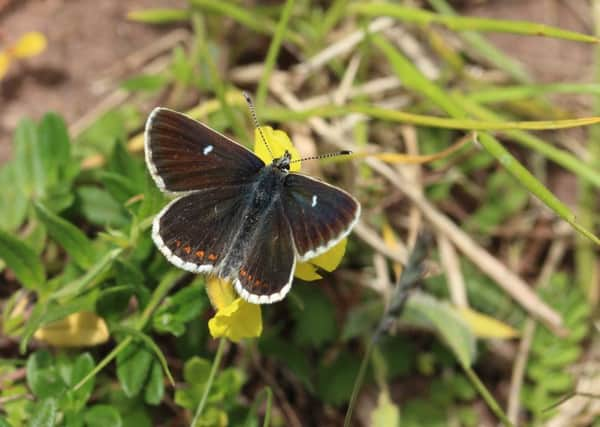Heatwave helps butterfly numbers recover


The annual UK Butterfly Monitoring Scheme (UKBMS) found that more than two thirds (72 per cent) of Scottish butterfly species were seen in higher numbers than in 2017, compared with 68 per cemt across the UK.
While 18 of 25 species monitored in Scotland increased in abundance last year, compared with 39 of 57 species throughout the UK, butterflies north of the Border are also faring better in the long term.
Advertisement
Hide AdAdvertisement
Hide AdAround one third (36 per cent) of butterfly species (nine of 25) north of the Border show an apparent decline since records began 43 years ago, compared with two thirds (36 of 57, or 63 per cent) across the UK.
Numbers of the threatened grayling butterfly rose in Scotland by 100 per cent from 2017-18, while another conservation priority species, the northern brown argus, rose by 53 per cent. The species, which are both suffering from significant long-term decline, benefited from good weather when they were flying early last summer.
The UKBMS – led by the charity Butterfly Conservation, the Centre for Ecology and Hydrology, the British Trust for Ornithology and the Joint Nature Conservation Committee – also highlighted a particularly good year for common white butterflies. The small white enjoyed the highest increase in abundance of all, after it rose by 325 per cent in Scotland compared with 155 per cent across the UK, due to the warm, sunny weather from April to the end of July.
The large white – better known as the cabbage butterfly – had the second biggest annual increase, up by 278 per cent from 2017.
The wall butterfly – another in long-term decline across the UK – had its second best year on record in Scotland – up 182 per cent.
One of the most rapidly declining British butterflies, the wall, has suffered a long-term decline of 88 per cent across the UK. However, having vanished from some English counties in recent years, it appears to be spreading north due to climate change and shows a 10 per cent long-term increase in Scotland.
The species with the biggest annual decline in Scotland, however, was the migratory red admiral, which was down by 72 per cent, although the alarming drop was partly due to an exceptionally good year for the species the previous year.
The chequered skipper, which until recently was restricted to Scotland in the UK, declined by 28 per cent.